by GardenLover | Oct 29, 2014 | Gardens to Drive
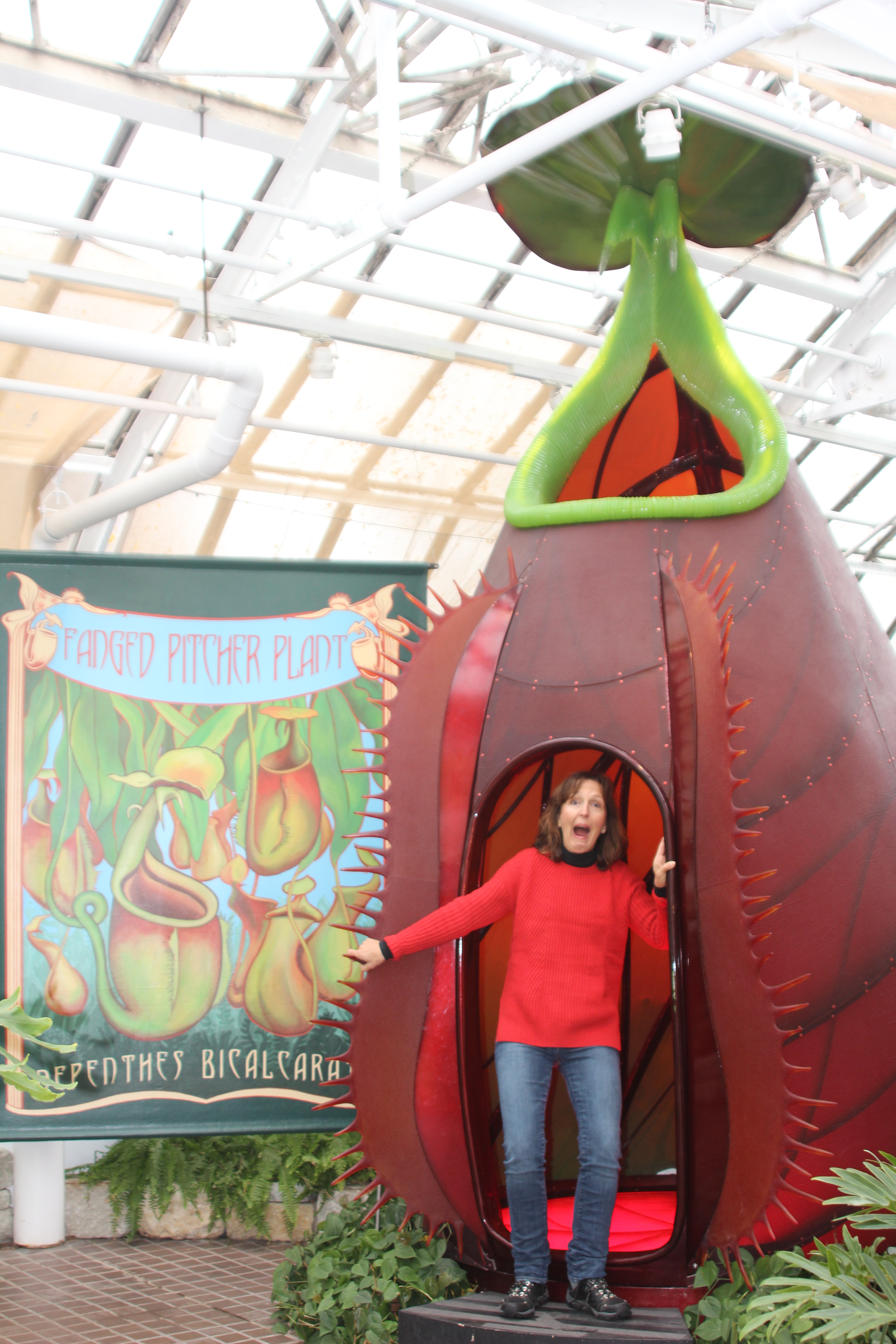 Boo! Scary Plants for Your Garden
Boo! Scary Plants for Your Garden
By Teresa Woodard
I love a good scare – a scary movie, a haunted house and even an occasional hide-behind-the-door prank. 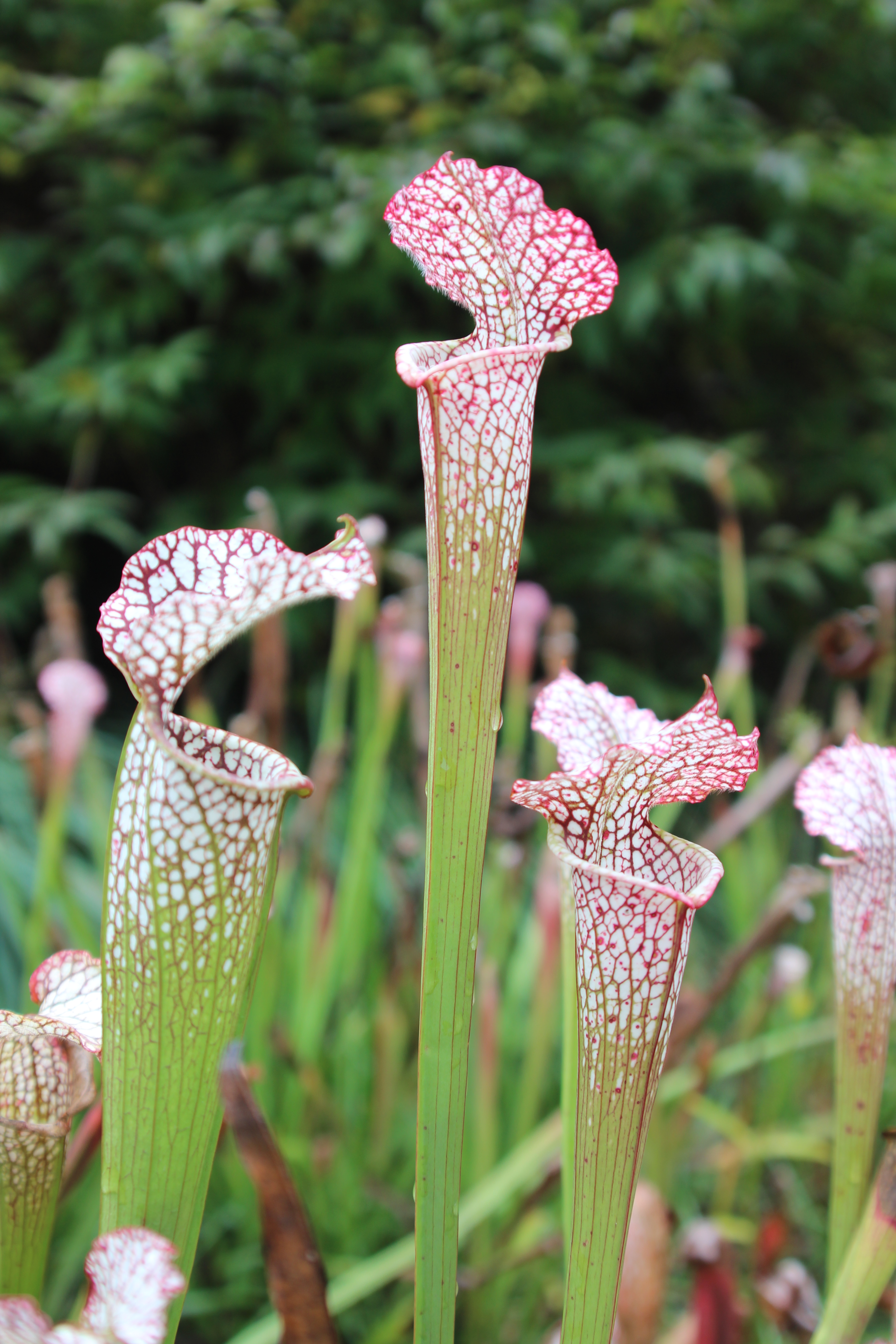 So, I was captivated by the Franklin Park Conservatory’s timely “Scary Plants” exhibit which turned out to be a virtual fun house of horticultural horrors!
So, I was captivated by the Franklin Park Conservatory’s timely “Scary Plants” exhibit which turned out to be a virtual fun house of horticultural horrors!
Two flesh-eating favorites starred in the carnivorous plants display. The American pitcher plant (Sarracenia) lures prey inside its trumpet-shaped leaves with an intoxicating nectar.
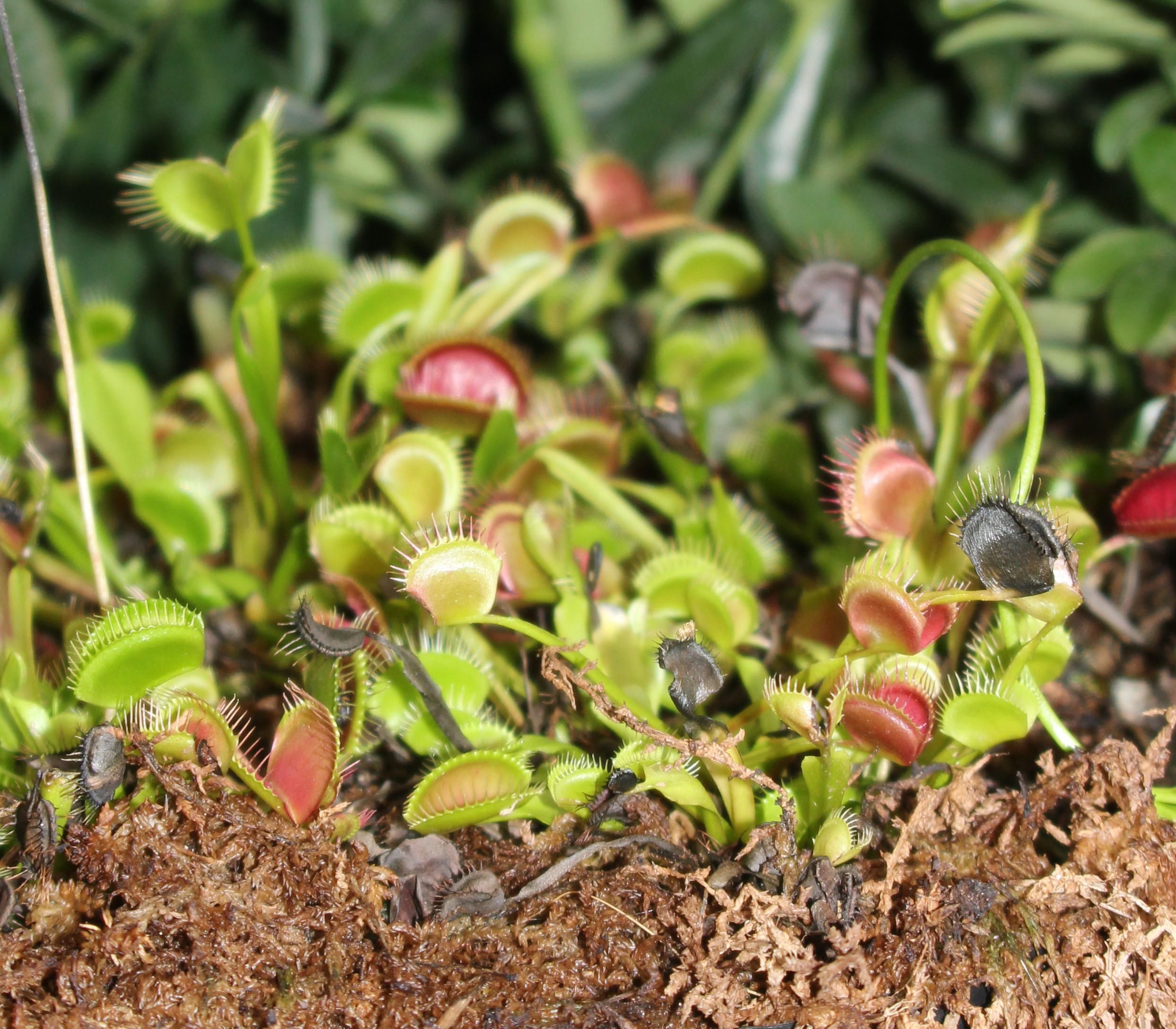 The Venus fly trap (Dionaea muscipula) tricks insects with its open trap that snaps shut when insects unknowingly touch trigger hairs that signal the trap.
The Venus fly trap (Dionaea muscipula) tricks insects with its open trap that snaps shut when insects unknowingly touch trigger hairs that signal the trap.
Equally scary, another group of vicious plants are famed for their spikes and hidden poisons. Don’t be fooled by Daturas’ beautiful blooms – the plants contain highly poisonous tropane alkaloids that can cause hallucinations and even death. Castor bean plants (Ricinus communis) may be fun to grow for their colorful foliage and interesting seed pods, but the plant contains ricin, a deadly toxin. Even the beloved Ohio buckeye (Aesculus glabra) produces nuts that contain poisonous tannic acid.
On the prickly side, be sure to sidestep any honey locust trees and their wicked thorns. A neighbor boy was hiking in a nearby preserve with our kids and stumbled upon a thorn which punctured his knee. Ouch! Prickly pear (Opuntia polycantha ‘Bronze’) and porcupine tomato (Solanum pyracanthum) are two other don’t-touch plants.
A final group of plants are more bizarre than scary. Check out gray-haired ‘Old Man’ cactus (Cephalocereus senilis) and pumpkin-on-a-stick (Solanum aethiopicum) which is a relative to tomatoes and eggplants. 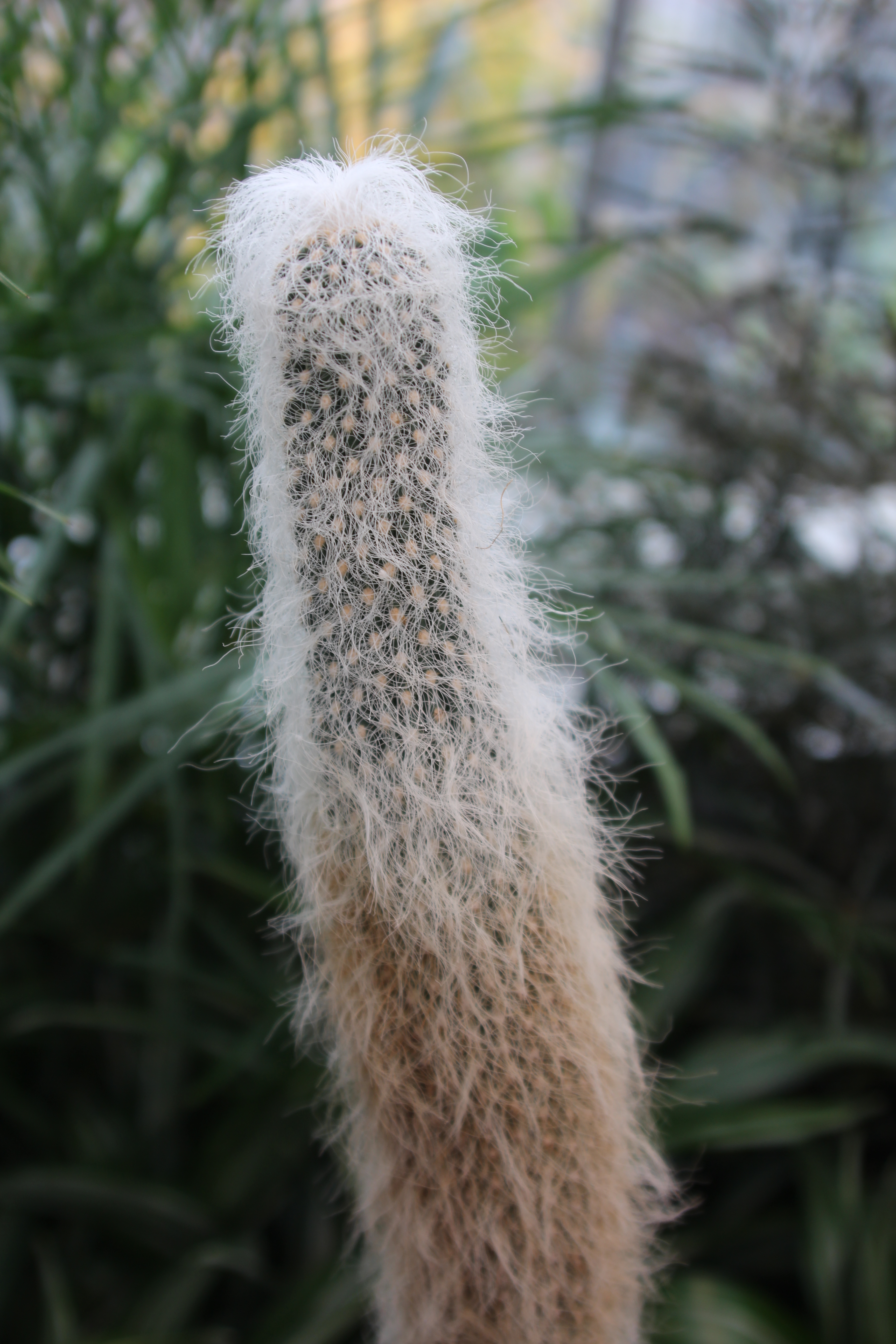
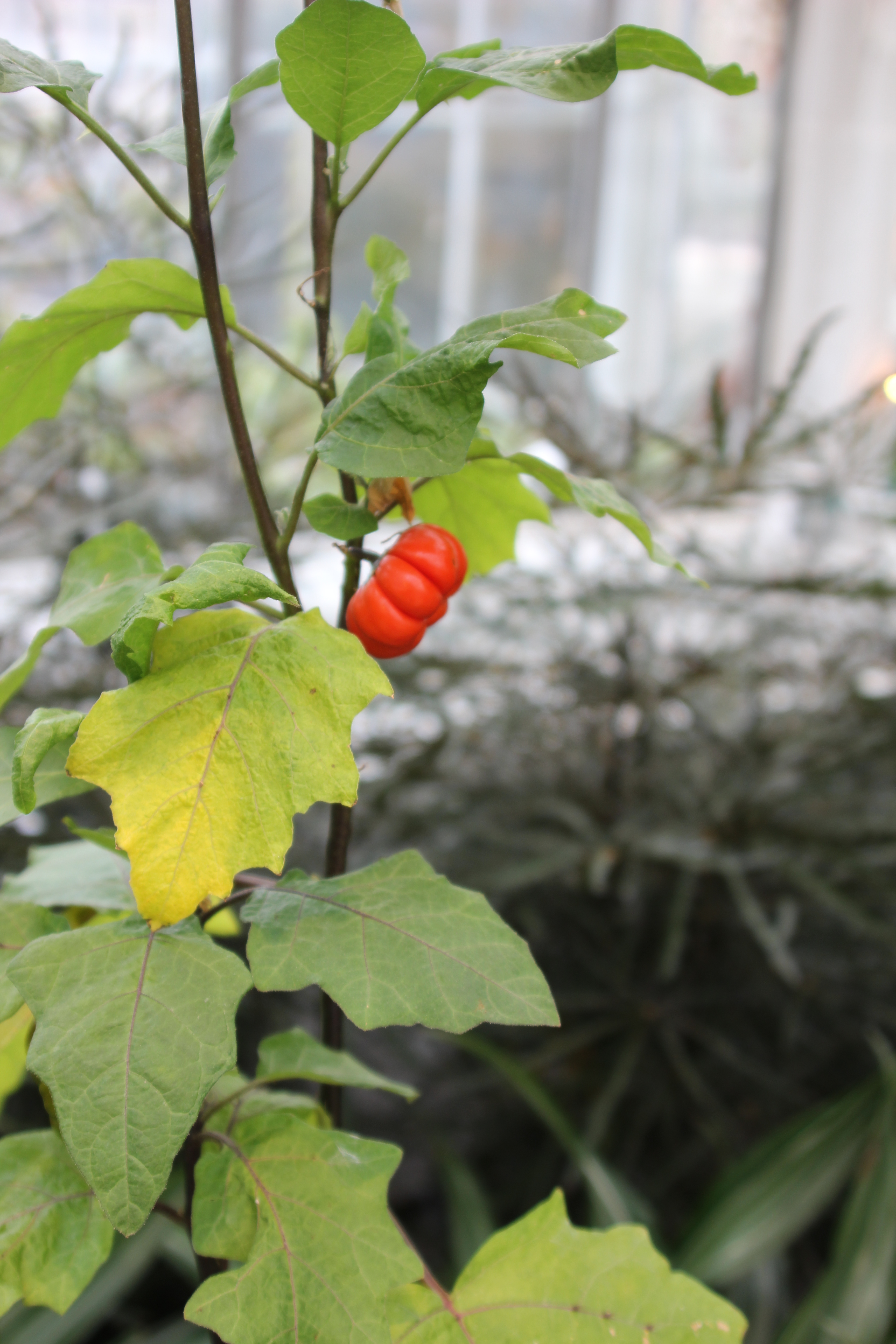
If I haven’t scared you away, visit Franklin Park Conservatory to learn more about these botanical wonders. The ‘Scary Plants’ exhibit runs through Nov. 9. Other ghoulish garden events include the Haunted Conservatory (Oct. 30) at Garfield Park Conservatory in Indianapolis, the Creepy Crawl (Oct. 31)at Missouri Botanical Gardens in St. Louis, and the Jack-O-Lantern Spectacular (through Nov. 9) at Iroquois Park in Louisville.
by GardenLover | Sep 15, 2014 | Gardens to Drive, Trendspotting

By Teresa Woodard
Last month, Debra, Michael and I traveled to Pittsburgh for a jam-packed, 4-day conference with the Garden Writers Association. Here, we met with hundreds of other communicators in the lawn and garden industries and witnessed first-hand many of the Steel City’s green trends.
No-mow lawns – Designed by Hugh Newel Jacobsen, this LEED home features a gravel front “yard” and mixed fescue “no mow” backyard.

Rooftop gardens –The south terrace at the David L. Lawrence Convention Center features a rooftop garden that’s both aesthetic for convention events but also functional, acting as a natural insulator and reducing stormwater runoff.
Succulent sod – On the trade show floor, this sedum sod by Great Garden Plants caught our attention for its ease of installation, trial success and beauty.

Edibles in the landscape – Props to these downtown restaurants (The Porch and Levy Restaurant) for featuring edibles, like chard and basil, in their landscape designs.

Downtown beautification – Just steps from the University of Pittsburgh, Schenley Plaza was recently renovated by the Pittsburgh Parks Conservancy and today features this All-America Selection Display Garden.
Harvesting water — At the Phipps Conservatory’s Center for Sustainability, all stormwater runoff is captured in a lagoon system and passed through a plant-based treatment process for later use in irrigation and toilet flushing.
by GardenLover | Sep 2, 2014 | Gardens to Drive

 Michael Leach will be part of a garden guru panel Fri., Sept. 5 at 1 p.m. at the 2014 Home & Garden and Holiday Fest at the Ohio Expo Center in Columbus, Ohio. Michael and other panelists will answer questions and offer tips for the winter garden.
Michael Leach will be part of a garden guru panel Fri., Sept. 5 at 1 p.m. at the 2014 Home & Garden and Holiday Fest at the Ohio Expo Center in Columbus, Ohio. Michael and other panelists will answer questions and offer tips for the winter garden.
“Anyone can plant flowers, but if you can make a garden interesting in the wintertime, you’ve really accomplished something,” Michael told the Columbus Dispatch in a show preview story on Sunday.
The panel includes: Larry Burchfield, owner of Cedarbrook Landscaping and Garden Center; Fred Hower, The Ohio Nurseryman and Columbus State Community College instructor; Ellen Gallucci Purcell, co-owner of Riepenhoff Landscape; and Tom Wood, NBC4’s gardening expert and owner of Wood Landscape Services.
On the home side of the show, HGTV’s Jonathan and Drew Scott, aka the Property Brothers, will appear at 2 p.m. Saturday to present “Dream Home 101.”
For more info, visit the show’s website.
by GardenLover | Jun 16, 2014 | Gardens to Drive
 By Michael Leach
By Michael Leach
What’s the best approach for handling dead roses and other winter-killed flora? Mourn. Research. Shop.
Don’t spend much time tsk-tsking about plant replacement costs. Do you seriously count the expense of fast-food or pizza on those can’t-stand-to-cook nights? Plants last years, fast food mere minutes. Why begrudge similar outlays to replace the missing teeth in your landscape’s smile?
In some back yards there may be serious “dental” expenses considering the horrid winter KO’d Knock Out roses and other tough plants. Those of us who grow plants happier in warmer climes must make a decision. Is it worth years of waiting for them to return to pre-ice age sizes after being frozen to the ground?
Herein lies one of the basics of success with a plant: how cold a winter can it survive? The U.S. Department of Agriculture’s hardiness zone map of the country uses colorful bands to show the lowest winter temperatures likely for every region.
A Zone 5 plant, for instance, should be able to weather -20 degrees, a Zone 6 plant can handle -10 degrees. Most of Ohio is Zone 6. No fool-proof guarantee but one important factor for success.
There are others to consider, so forget flower colors and cute names for a moment. Each plant needs certain environmental factors to thrive. These include sunlight, soil and moisture. Put a fern, which relishes a shady spot with moist, loamy soil, in a gravely, sunny place and you’ll find crispy fronds the first scorching July afternoon.
Here are more points to consider when evaluating a potential plant for your yard:
- How big will it grow. A plant that naturally spreads several feet is a poor choice for bordering a walk or driveway, unless you love pruning — frequently.
- Will it produce messy fruit that could mar the deck, sidewalk or driveway?
- How prone is it to breaking from too much snow or ice?
- Will it attract pesky bugs?
- How resistant is it to common diseases?
- What’s the best way to plant and care for it?
In this Internet-connected age, ignorance is no excuse for buying the wrong plant. One of my go-to spots is the Plant Finder at the Missouri Botanical Garden’s website.
When it comes to low-maintenance with lots of color, the new shrub roses, such as Knock Out, Easy Elegance and Drift Roses, are hard to beat. What’s not to like about flowers from spring into fall with little work? (Check out our comments at Columbus Monthly and Heartland-Gardening). Just plant them properly and make sure they get off to a good start this year.
Roses aren’t the only flowering plants for season-long color. Consider shrubs with burgundy, chartreuse and variegated leaves. No dead-heading needed. Many perennials offer the same bonus foliage features.
So enough whining about winter. Start making your landscape — and you — smile again.
by GardenLover | May 20, 2014 | Gardens to Drive
Heartland Gardening was delighted to have high school senior Abby Fullen assist with our blog this spring. Thanks to her writing, photography, copy editing, layout and researching help, we were able to offer the Spring Countdown and several additional posts. We congratulate Abby on her upcoming graduation from Hilliard Davidson High School and wish her the best as she continues the next chapter of her life (hopefully filled with plenty of her writing).
Enjoy this final post by Abby. She spent an afternoon at Inniswood Metro Gardens in Westerville, Ohio. This 123-acre park once was the estate of sisters Grace and Mary Innis and today is cared for by a dedicated team of volunteers. Inniswood boasts more than 2,000 species of plants, specialty collections and several theme gardens including a herb garden, rose garden, woodland rock garden and delightful children’s garden. In fact, the garden will be one of the featured excursions for the 22nd annual National Children & Youth Gardening Symposium in Columbus, Ohio, July 17-19. Plus, our own blogger Debra Knapke is one of its biggest fans as a past curator of the herb garden, former president of the Inniswood Garden Society and a member of the Design Committee for the Sisters Garden, 10 years ago.
Click here for Abby’s pictorial essay.
by GardenLover | Apr 12, 2014 | Gardens to Drive
Do you need some garden help?
 By Teresa Woodard
By Teresa Woodard

Black Java
Meet our newest gardening crew – two black Java and two cuckoo Maran chickens. Yes, these hens are tilling, weeding and even fertilizing the soil as we prep our vegetable garden area. Plus, they’re laying beautiful brown eggs and bringing us lots of laughs.
According to Mark Glover of BackyardchickensHQ.com, hatcheries’ sales are up and the small-order sales are growing the most. Besides their gardening benefits, chickens are attracting more attention as people want to live sustainably, know their food source and protect some of the rare heritage poultry breeds.

Cuckoo Maran
When my 14-year-old son Mark and I started talking about keeping chickens, we visited a friend’s farm and learned about their care. While we fell in love with their mixed flock and their beautiful eggs, we postponed our own chicken raising. Two years later, we decided to move ahead with some hens (my son couldn’t wait for chicks to grow up to lay eggs) and returned to the farm to purchase a couple of their dual-purpose (egg and meat) heritage breeds.
Now that we’ve had “the girls” for a few weeks, we delight in gathering their eggs in the morning and turning them loose in the garden for an hour after dinner to watch their antics as they dig for grubs and follow Mark around the garden as he shovels up worms for them to devour.
If you’re interested in learning more, we encourage you to visit a poultry show, take a backyard chickens class and check out the links below.
 Boo! Scary Plants for Your Garden
Boo! Scary Plants for Your Garden So, I was captivated by the Franklin Park Conservatory’s timely “Scary Plants” exhibit which turned out to be a virtual fun house of horticultural horrors!
So, I was captivated by the Franklin Park Conservatory’s timely “Scary Plants” exhibit which turned out to be a virtual fun house of horticultural horrors! The Venus fly trap (Dionaea muscipula) tricks insects with its open trap that snaps shut when insects unknowingly touch trigger hairs that signal the trap.
The Venus fly trap (Dionaea muscipula) tricks insects with its open trap that snaps shut when insects unknowingly touch trigger hairs that signal the trap.











